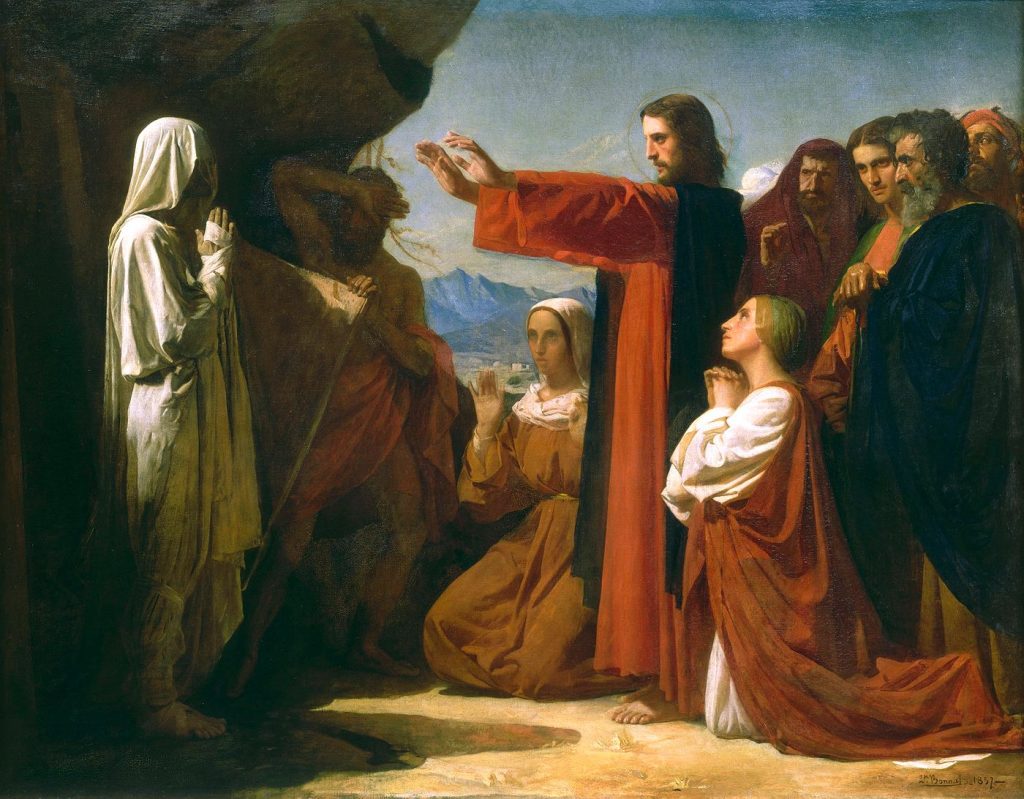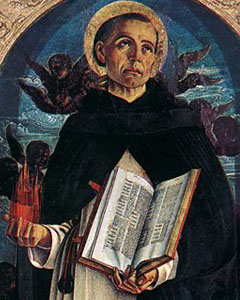Resurrection of Lazarus
Fifth Sunday of Lent
On this fifth Sunday of Lent we continue with these magnificent readings from the gospel of John who for the last three weeks has reveal to us who Jesus is in our lives. Two weeks ago we heard the gospel of the woman at the well in which Jesus reveals himself as the “living water” who wants to satisfy the deepest longing, thirst of our souls. Last week we heard of the man born blind which represents all of us who have been born blind because of our sins. In this gospel we also have another revelation. Jesus reveals himself as the “light of the world” and invites us to come out of our darkness and to see in His light.

The Raising of Lazarus, 1857, Léon Joseph Florentin Bonnat
This Sunday, John gives us the greatest of all revelations; of all “I ams” of Jesus statements in the story of the resurrection of Lazarus when Jesus says “I am the resurrection and the life”. There is no more wonderful, more powerful identification of Jesus than this. In this particular gospel we see both, the human Jesus and the divine Jesus. As fully human, he weeps because of the death of Lazarus; as fully divine he brings him back to life. St. Irenaeus from Lyon said “Gloria Dei est vivens homo” which means “the glory of god is man fully alive.” So, if “life” gives glory to God what is it that makes him weep? Our death, that is our spiritual death because of our sins, resentments, anger, violence to the point that we stink, that is, that affects all of us around us. It is to this disgusting, stinkiest, rotten part of our lives where Jesus, the Son of God, comes to bring us out, to give us life. Isn’t this amazing and powerful? God weeping for us because we are not alive and he wants us alive. In this season of lent God invites us to take away the stone and come out and be fully alive for that is his glory.
“Open our graves, Lord, remove us from the prison of death. Place your Spirit in us so that we may live in a world of freedom.”
From Come, Lord Jesus by Lucien Deiss, CSSp
Readings for the Week
Monday: Dn 13:1-9, 15-17, 19-30, 33-62 [41c-62]; Ps 23:1-6; Jn 8:1-11
Tuesday: Nm 21:4-9; Ps 102:2-3, 16-21; Jn 8:21-30
Wednesday: Dn 3:14-20, 91-92, 95; Dn 3:52-56; Jn 8:31-42
Thursday: Gn 17:3-9; Ps 105:4-9: Jn 8:51-59
Friday: Jer 20:10-13; Ps 18:2-7; Jn 10:31-42
Saturday: Ez 37:21-28; Jer 31:10, 11-13; Jn 11:45-56
Sunday: Mt 21:1-11 (procession); Is 50:4-7; Ps 22:8-9, 17-20, 23-24; Phil 2:6-11; Mt 26:14 — 27:66 [27:11-54]
Saints & Special Observances
Sunday: Fifth Sunday of Lent
Tuesday: St. Isidore
Wednesday: St. Vincent Ferrer
Friday: St. John Baptist de la Salle; Abstinence; First Saturday

St. Vincente Ferrer
St. Vicente Ferrer, patron of construction workers, He died on April 5, 1419. This holy man was born in Valencia, Spain, in 1350, lived and preached the Gospel in a very difficult time of Christianity. Besides the plague, wars and other social problems, the Church was divided by two or three men who insisted on being the true Pope. St. Vincent was a Dominican religious, dedicated his life to rebuilding the Church by promoting the virtue of internal and external charity through a preaching that related the Word of God to daily life. St. Vincent used theology, poetry, repetition, and other means to engrave biblical wisdom in his listeners. In this way he was able to build faith both in the faithful and in the Church as a community.
The pictures of this Spanish saint usually present him with a burning flame in one hand and in the other, with an open Bible. In this way the artists emphasize the fervent and ardent love that Christians must have for the Word of God, a love that Vincent built in the hearts of the faithful.
Fray Gilberto Cavazos-Glz, OFM
